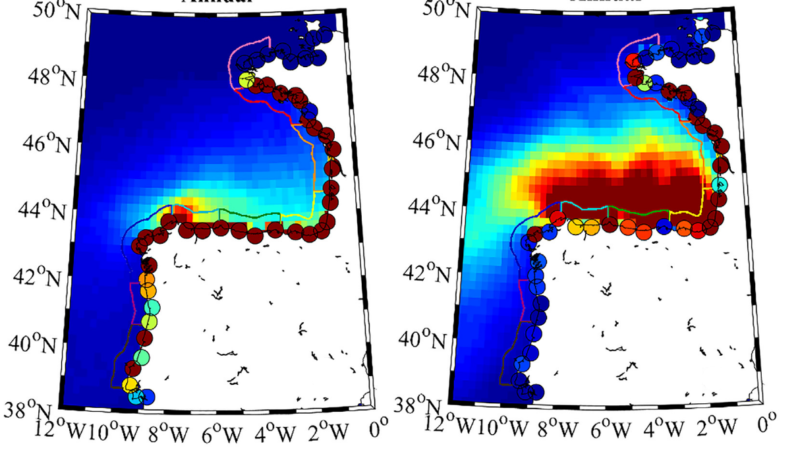Researchers from the University of Vigo, the University of Santiago de Compostela and the Spanish Institute of Oceanography in Vigo carried out a study on transport of plastics of different sizes that enter the Bay of Biscay in order to analyze their destination within this area. The results obtained indicate that this gulf constitutes a trapping zone for exogenous plastics.
The work was recently published in the Journal of Sea Research in an article entitled The Bay of Biscay as a trapping zone for exogenous plastics of different sizes and signed by Laura Rodríguez, Moncho Gómez Gesteira and José Luis Gómez Gesteira, from the Environmental Physics Laboratory group (Ephyslab), from the Marine Research Center of the University of Vigo; Xurxo Costoya, from the Institute of Cross-disciplinary Research in Environmental Technologies (Cretus), from USC, and Jesús Gago, from the Oceanographic Center of Vigo, from IEO.
As the authors of the work explain, “it is estimated that around 10% of the plastics produced will end up in the ocean, representing approximately 70% of marine litter.” The dispersion and accumulation of these plastics in certain regions of the world, they add, depends in part on their buoyancy, which varies according to their size. In this global context, they detail, the Bay of Biscay is considered a medium-level region in terms of plastic pollution.
Microplastics and larger plastics
In the study, the researchers used a Lagrangian model to simulate successive paths through plastics with virtual particles. As they explain, “although it was seen that the general pattern followed by plastics depends mainly on ocean currents, the wind can modulate it especially in the case of larger plastics”. For this reason, in order to evaluate the fate of plastics that enter the Bay of Biscay through the strait north of Cape Ortegal, in this work “the speeds of the marine currents and different drag coefficients were used to obtain take into account their diversity of sizes and, therefore, their exposure to the effect of the wind ”.
As a result of the work carried out, indicate those responsible, “it was detected that the plastics that enter the Bay of Biscay rarely leave this area, which makes it a region of entrapment”. Thus, they point out, only a small percentage of plastics, between 4 and 15%, were dispersed towards the Atlantic coast of the Iberian Peninsula or surpassed French Brittany. The entrapment of plastics in the Bay of Biscay, they indicate, “had a particularly noticeable result in larger plastics (> 5 mm) strongly affected by the wind that pushes them towards the ground”. In fact, the researchers detail, “this type of plastics tend to accumulate in a narrow strip along the coast (with a probability around 90%), which favors their accumulation on the coast (with a probability of 60%). On the contrary, they add, microplastics (<5mm) showed a great tendency to disperse freely towards the ocean, being able to reach any location within the studied gulf, “which is worrying because their small size makes sampling and collection difficult”.

Source: DUVI

